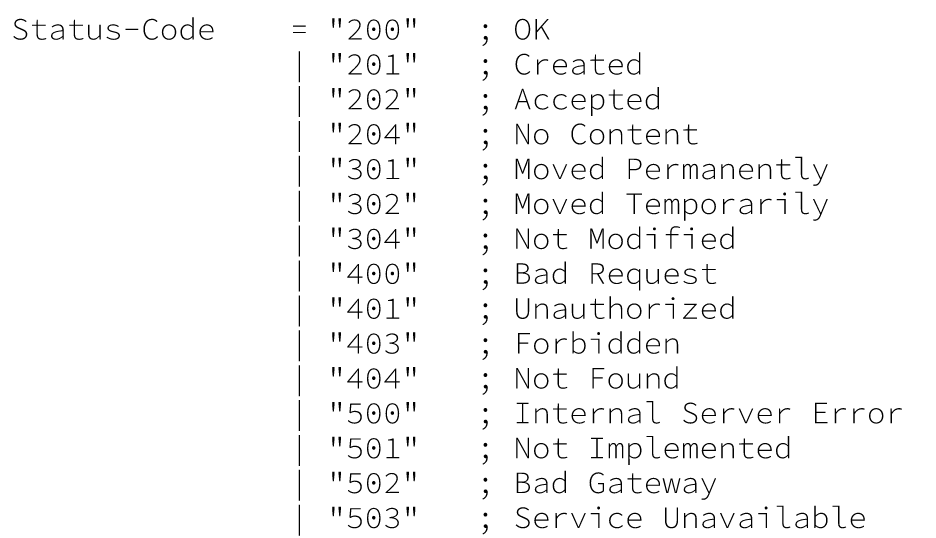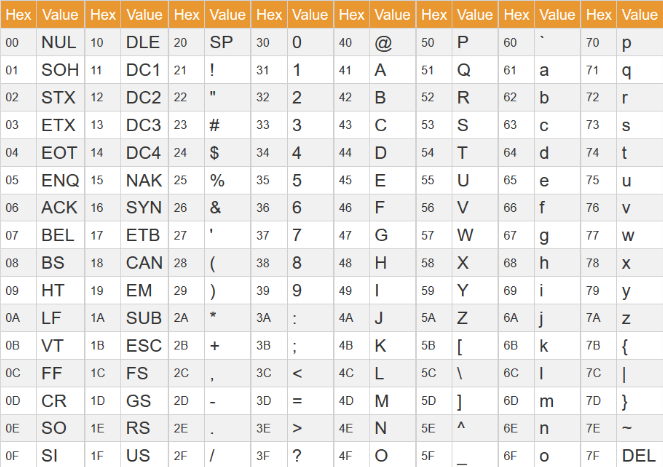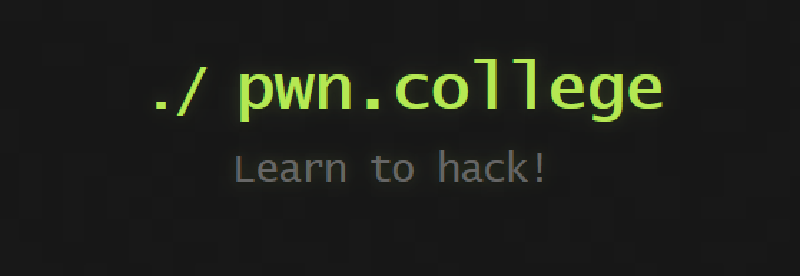Talking Web
———–ASU CSE 365: Introduction to Cybersecurity
Talking Web: Introduction
static http request:
GET /cat.gif HTTP/1.0—>HTTP/1.0 200 OK <—
dynamic http request:
Talking Web: The Internet
TCP/IP

- Link Layer(Physically link computers)
- Internet Layer(Find the right computer:IP、ICMP、ARP)
- Transport Layer(Find the right program:UDP、TCP)
- Application Layer(Talk with the program:HTTP、FTP、SMTP、SSH)
Talking Web: RFC 1945
①Hyper Transfer Protocol: HTTP is an application-level protocol
②Request-Line = Method SP Request-URI SP HTTP-Version CRLF
SP: space, CRLF: \n
- Method: “GET” | “HEAD” | “POST”
③Status-Line = HTTP-Version SP Status-Code SP Reason-Phrase CRLF
Status-Code Definition
1xx: Informational-Not used, but reserved for futrue use
2xx: Success-The action was successfully received, understood, and accepted
3xx: Redirection-Further action must be taken in order to complete the request
4xx: Client Error-The request contains bad syntax or can’t be fulfilled
5xx: Server Error-The server failed to fulfill an apparently valid request

④ GET
GET /greet HTTP/1.0
Host: hello.example.com
HTTP/1.0 200 OK
Content-Type: text/html; charset=UTF-8
Content-Length: 39
<html><body>Hello, World!</body></html>
⑤ HEAD
HEAD /greet HTTP/1.0
Host: hello.example.com
HTTP/1.0 200 OK
Content-Type: text/html; charset=UTF-8
Content-Length: 39
⑥ POST
POST /greet HTTP/1.0
Host: hello.example.com
Content-Length: 11
Content-Type: application/x-www-form-urlencoded
name=Connor
HTTP/1.0 200 OK
Content-Length: 0
Talking Web: URLs and Encoding
① URL: <scheme>://<host>:<port>/<path>?<query>#<fragment>
scheme: Protocol used to access resource
host: Host that holds resource
port: Port for program servicing resource
path: Identifies the specific resource
query: Information that the resource can use
fragment: Client information about the resource
②URL encoding
SP=%20 #=%23 /=%2F ?=%3F A=%41

③ Content-Type: Form
application/x-www-form-urlencoded name=xx
application/json {“name”:“xx”}
Talking Web: State
① HTTP is a stateless protocol
solution: use HTTP Headers for maintaning state
- The server sets a cookie in a response with the header: Set-Cookie
- The client includes the cookie in future requests with the header: Cookie
babyhttp
the challenge python shell
1
2
3
4
5
6
7
8
9
10
11
12
13
14
15
16
17
18
19
20
21
22
23
24
25
26
27
|
#!/opt/pwn.college/python
import random
import pathlib
import shutil
import hashlib
import psutil
from flask import Flask, request, make_response, redirect, session
app = Flask(__name__)#app is an instance of a flask that accepts requests from a web server, the parameter is the __name__(env parameter)-->py file_name/function_name
flag = open("/flag").read()
config = (pathlib.Path(__file__).parent / ".config").read_text()
#__file__:the current file path; /:add ; read_text():read the text file to string
challenge_name, client_name = config.split()#client_name:used command
def value(n): #Generates a n-character hexadecimal number
return "".join(random.choice("0123456789abcdef") for _ in range(n)) #_:temp parameter
def validate(name, value, correct):
assertion_message = f"Incorrect {name}: value `{value}`, should be `{correct}`\n" #f-string
assert value == correct, assertion_message
#assert expression (if false:output)
......#only analyse some of the whole code
if __name__ == "__main__":
app.secret_key = flag#SECRET_KEY major role is to provide a value for all kinds of HASH
app.run("127.0.0.1", 80)
|
level1: curl—–> (CommandLine Uniform Resource Locator): The network request tool used under the terminal
1
2
|
USAGE: curl [options...] <url>
-v: output details
|
execute the file and click into the web:
1
2
|
Incorrect client: value `/usr/lib/code-server/lib/node`, should be `/usr/bin/curl`
so open a new terminal: `curl 127.0.0.1:80` get the flag
|
level2: nc—–>Used to send and to monitor any TCP and UDP data, so we can simulate any client or server
1
2
3
4
5
|
nc 127.0.0.1 80
#Simulate the HTTP request
GET / HTTP/1.1 #input
host: localhost #127.0.0.1 either
-l:listeng -p:port
|
level3: python
1
2
3
4
5
|
python
>>import requests
>>response = requests.get(url='http://127.0.0.1:80')
>>print(response) #<Response [200]>
>>print(response.content) #get the flag
|
level4: curl
1
2
3
4
|
curl 127.0.0.1:80
#Incorrect host: value `127.0.0.1`, should be `xxx`
curl 127.0.0.1:80 -H 'Host:xxx' #get the flag
#-H :Request custom IP address and specify HOST only for the 'HTTP'
|
level5: nc
just change the host: localhost to the host: xxx so that we can get the flag.
level6: python
1
2
3
4
5
|
python
>>import requests
>>headers={"host":"xxx"}
>>res=requests.get("http://127.0.0.1:80",headers=headers)
>>print(response.text) #get the flag
|
level7: curl—>hint: path
1
|
curl -v 127.0.0.1/xxx #get the shell:it's not explicit so I even didn't understand the meaning of 'path'
|
level8: nc
just change the GET / HTTP/1.1 to the GET /xxx HTTP/1.1 so that we can get the flag.
level9: python
change the http://127.0.0.1:80 to http://127.0.0.1/xxx and get the flag
level10: curl—>hint:path_encoded
1
|
curl -v 127.0.0.1/xx%20xx%20xx # /xx xx xx the blank will be the %20 in the url
|
level11: nc
1
|
GET /xx%20xx%20xx HTTP/1.1 #get the flag
|
level12: python
1
|
res=requests.get("http://127.0.0.1/xx%20xx%20xx")
|
level13: curl—>hint: arg
1
2
|
curl -v 127.0.0.1:80?a=xxx
curl -v 127.0.0.1:80/?a=xxx
|
level14: nc
level15: python
1
|
res=requests.get("http://127.0.0.1:80?a=xxx")
|
level16: curl—>hint:arg_multi
First, there’re some special character escape encodings in urls: &:%26 #:%23. Change these character
1
2
3
|
curl -v 127.0.0.1:80?a=xxx&b=xxx #same as'curl -v 127.0.0.1:80?a=xxx
#need to transfer meaning
curl -v 127.0.0.1:80?a=xxx\&b=xxx #get flag
|
another solution:
1
2
3
4
5
6
|
curl -X GET -G --data-urlencode "a=xxx" --data-urlencode "b=xx#xx xx&xx" -i http://127.0.0.1:80
#in double quote the '&# ' don't need to change
#-X:--request <command> Specify request command to use
#-G:--get Put the post data in the URL and use GET
#--data-urlencode:HTTP POST data url encoded
#-i:--include Include protocol response headers in the output
|
level17: nc
1
2
|
nc 127.0.0.1 80
GET /?a=xxx&b=xxx HTTP/1.1 #didn't use HTTP/1.1 can also get the flag
|
level18: python
1
2
|
payload={'a':'xxx','b':'xx xx&xx#xx'}
res=requests.get("http://127.0.0.1",params=payload)
|
level19: curl—>form, The form property returns a form reference that contains a URL field.
1
2
3
|
#POST
curl 127.0.0.1 -d "a=xxx"
#-d:--data <data> HTTP POST data
|
level20: nc
1
2
3
4
5
6
7
|
vim a.txt
#POST / HTTP/1.1
#Content-Length: 34 #this counts must be equal to the arguments
#Content-Type: application/x-www-form-urlencoded #Form data is encoded as name/value pairs. This is the standard encoding format
#
#a=xxx
cat a.txt | nc 127.0.0.1 80 # get the flag
|
level21: python
1
2
|
para={'a':'xx'}
res=requests.post("http://127.0.0.1",data=para)
|
level22: curl—>hint: form_multi
1
2
|
curl http://127.0.0.1:80 -d "a=xx" -d "b=xx" #get the flag
#found that '#' and ' ' don't need to change to %23 and %20, but '&' must change
|
level23: nc
1
2
3
4
5
|
POST / HTTP/1.1
Content-Length: 74
Content-Type: application/x-www-form-urlencoded
a=xxx&b=xxx
|
level24: python
1
|
para={'a':'xx','b':'xx'} #the '&, ,#' all don't need to change
|
level25: curl—>hint: json
1
|
curl 127.0.0.1 -H "Content-Type: application/json" -d '{"a":"xxx"}'
|
level26: nc
1
2
3
4
5
|
POST / HTTP/1.1
Content-Length: 57
Content-Type: application/json
{"a":"xxx"}
|
level27: python
1
2
3
4
5
|
import json,requests
data={"a":"xx"}
headers={'Content-Type':'application/json'}
res=requests.post("http://127.0.0.1",headers=headers,data=json.dumps(data))
print(res.text)
|
level28: curl—>hint: json_multi
having trouble here!
1
2
3
4
5
6
|
# the first try
curl 127.0.0.1 -H "Content-Type: application/json" -d '{"a":"8484e2a3838f64b6943f66c57d0d52a2","b":"{'\'c\'': '\'99aa4d7f\'', '\'d\'': ['\'7eb4984c\'', '\'c2c37973\ eb81af72\&b1ffc820\#f4fb51c1\'']}"}'
hacker@babyhttp_level28:/challenge$ curl 127.0.0.1 -H "Content-Type: application/json" -d '{"a":"8484e2a3838f64b6943f66c57d0d52a2","b":"{'\'c\'': '\'99aa4d7f\'', '\'d\'': ['\'7eb4984c\'', '\'c2c37973\ eb81af72&b1ffc820\#f4fb51c1\'']}"}'
Incorrect json b: value {'c': '99aa4d7f', 'd': ['7eb4984c', 'c2c37973 eb81af72&b1ffc820#f4fb51c1']}, should be {'c': '99aa4d7f', 'd': ['7eb4984c', 'c2c37973 eb81af72&b1ffc820#f4fb51c1']}
#question: it is string instead of json, so we need to remove the quotes around the values of b
|
1
2
3
4
5
|
# after many tries, get the solution
hacker@babyhttp_level28:/challenge$ curl 127.0.0.1 -H "Content-Type: application/json" -d '{"a":"8484e2a3838f64b6943f66c57d0d52a2","b":{"c":"99aa4d7f","d":["7eb4984c","c2c37973 eb81af72&b1ffc820#f4fb51c1"]}}'
pwn.college{xxx} #get the flag
#and remove the blackslash because it is not neccessory.
#and can't interchange the quotes!
|
level29: nc
1
2
3
4
5
6
7
8
9
10
|
#test.txt
POST / HTTP/1.1
Content-Length: 123
Content-Type: application/json
{
"a":"xx",
"b":{"c": "xxx", "d": ["xx", "x xx&xxx#xxxx"]}
}
cat test.txt | nc 127.0.0.1 80
|
level30: python
1
|
data={"a":"xx","b":{'c': 'x', 'd': ['xx', 'x xx&xxx#xxx']}} #just change this line
|
level31: curl—>hint: redirect
1
2
3
4
5
|
curl 127.0.0.1:80
curl 127.0.0.1:80/xxx #1
curl -L 127.0.0.1:80 #2
#-L:-location-->follow redirects
#--max-redirs options :redirect counts,-l:Always follow the redirect
|
level32: nc
1
2
3
|
nc -v 127.0.0.1 80
GET /xxx HTTP/1.1
#xxx from the "Location:xxx" of the response headers
|
level33: python
1
|
res=requests.get("http://127.0.0.1",allow_redirects=True)
|
level34: curl—>hint: cookie
1
2
3
4
5
|
curl 127.0.0.1 -b "anything"
#<p>You should be redirected automatically to the target URL: <a href="/">/</a>. If not, click the link.
curl 127.0.0.1 -L
#curl: (47) Maximum (50) redirects followed
curl 127.0.0.1 -L -b "anything" #get flag
|
level35: nc
1
2
3
|
nc -v 127.0.0.1 80
GET / HTTP/1.1
Cookie: cookie=xxx
|
level36: python
1
|
headers={"cookie":"anything"}#I found that the cookie is no need
|
level37: curl—>hint: state
1
|
curl -L -b "xx" 127.0.0.1
|
level38: nc
1
2
3
|
nc 127.0.0.1 80
GET / HTTP/1.1
Cookie: session=xxx
|
level39: python
1
|
res=requests.get("http://127.0.0.1")
|



